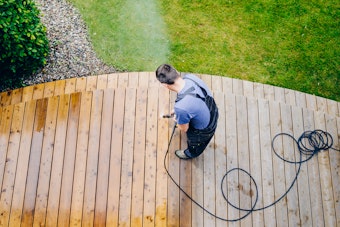Tips for Creating a Tree Swing
Tips for Creating a Tree Swing
<< BackExperience the sensation of flight at home by hanging a tree swing – an inexpensive backyard classic that brings timeless fun for everyone. Hanging the swing doesn’t require many tools, but it does require a bit of planning to ensure you have the right materials on hand and can make it as safe as possible.
Choosing a Tree and Branch
The first step in hanging any tree swing is to find the right tree. The best type of tree, according to Today’s Homeowner, is a sturdy hardwood tree such as an oak or maple.
After you’ve picked the right tree for your swing, it’s time to determine what branch will hold the swing. DIY Network recommends finding a limb 7 feet from the ground (not more than 20 feet). It’s also important to make sure the limb is 19 inches or more in circumference to ensure it’s sturdy enough for the weight and motion of swinging.
Choosing the Right Rope
Choosing the right rope for your tree swing makes a huge difference in how well your swing works. There are five popular types of rope you can use to hold the swing. These include:
- Polyester rope: Braided polyester rope (available at The Home Depot) is the best rope choice for a tree swing. It holds up well, provides maximum strength and has little stretch.
- Nylon rope: Nylon is the strongest rope, however it can be slippery for hands to grasp when needed. Nylon rope is available for purchase on Uline.
- Polypropylene rope: Polypropylene rope is one of the most popular all-purpose ropes. It’s lightweight and is one of the least expensive ropes available. However, it does deteriorate quickly in the sun.
- Natural fiber rope: While a natural fiber rope (available at Lowe’s) is popular for rustic tree swings, this particular material will rot over time and can break without warning. If you choose to use a natural fiber rope, be sure to replace it every year.
- Metal chain: A metal chain is strong and holds up well, however you should make sure you’re using a corrosion-resistant chain. Additionally, a chain should only be used for swings installed with eyebolts and not attached around the tree.
Once you’ve chosen your rope, it’s important to make sure it has a working load limit of at least 695 pounds and you get enough rope to hang your swing, according to Today’s Homeowner. DIY Network recommends purchasing at least 20 feet.
Type of Swing
There are a variety of different swing seats you can use for your tree swing. The most popular are tire and wooden bench seats. If you’re using a tire and the cost isn’t an issue, you can simply buy a single new tire. For the most cost-friendly way, look for a used tire. If you’re purchasing a used tire, make sure the tire is in decent shape without any large cracks. It’s also important to look for thin treads where the reinforcing wires may be revealed. To attach the rope to the tire swing, check out this guide from Bob Villa.
If you’re opting towards a wooden seat, you can either purchase it at a local playground store or make it yourself. Lowe’s has great step-by-step directions on how to make a sturdy wooden seat and attach it to the rope here.
Attach the Swing to the Tree
The safest way to install a tree swing is to use eye hooks. As eye hooks are stationary, they will not cause any damage on the tree like a rope. Although the hooks are actually nailed into the branch, the limbs can grow over the bolts, making the bolts permanent fixtures. San Francisco Chronicle recommends purchasing half-inch to five-eights-inch diameter eye hooks with posts slightly larger than the limb. To install the hooks, drill a hole through the branch where you can drive the eye hook with the hook extending down toward the ground. Next, attach a carabiner to an eye hook to provide a convenient place to connect your swing with rope or chain. Happy swinging!
Tip: Use WD-40® Specialist® Silicone Lubricant to waterproof and protect carabiners and connectors used to attach the swing seat.
FEATURED PRODUCTS
WANT TO GET MORE TIPS AND TRICKS?
SUBSCRIBE TO THE NEWSLETTER


